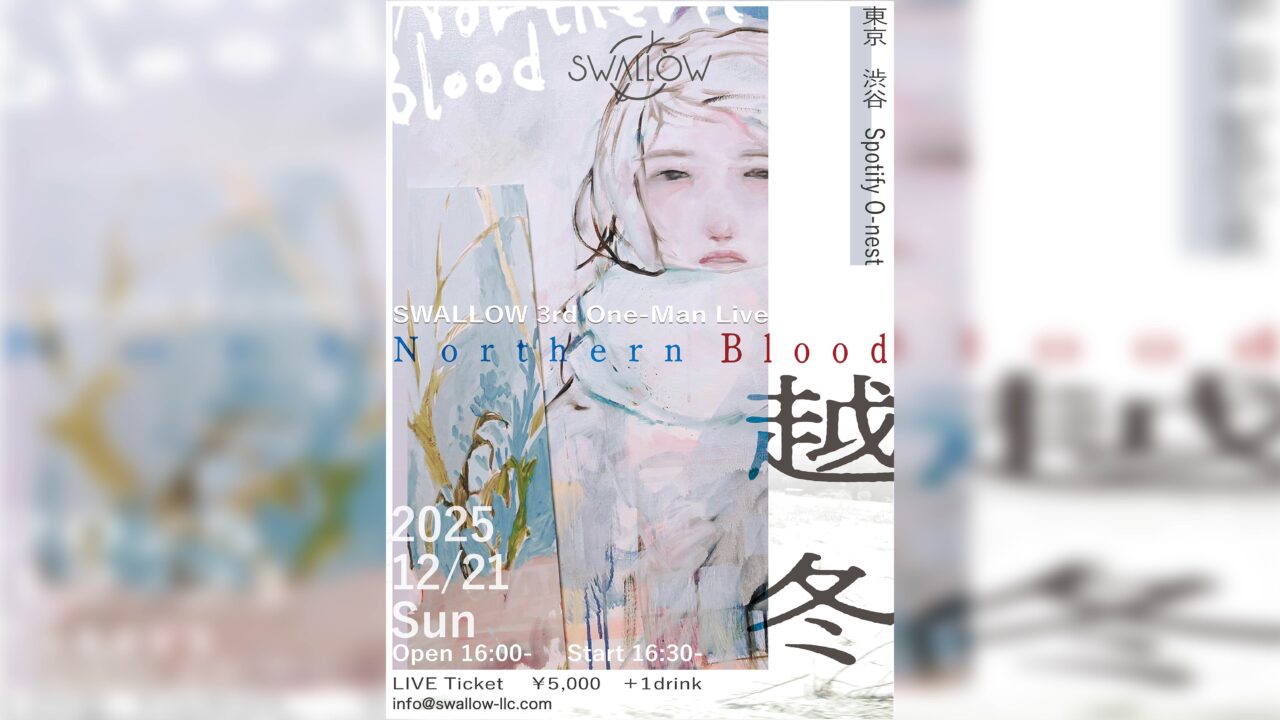When Yuta Orisaka released ‘Jumon’ in June last year, it marked a quiet yet striking shift in tone. Where 2021’s ‘Shinri’ had bristled with the raw tension of its time — a product of isolation and unease — ‘Jumon’ breathed with ease, gently unfolding moments from daily life like pages in a diary. Back then, writing for NiEW, I described the album as one through which “a gentle, pleasant breeze blows.” And indeed, the air that moves through ‘Jumon’ is a different wind altogether — softer, more domestic — than the one that cut through ‘Shinri’.
Since the release, Orisaka has taken ‘Jumon’ on the road, touring nine cities with the core four members of his band. Those performances gave shape to the album’s world, bringing its subtleties to life through careful, intimate staging.
Now, with “The Waltz of the Left Behind,” he returns for his most ambitious live performance to date. Expanding the band to an 11-piece ensemble — including the “Juusou” group and a string quartet led by Atsuko Hatano, known for her arrangements since ‘Heisei’ — Orisaka steps into new sonic territory. For the first time, the strings that have haunted his recordings take their place on stage, not as adornments, but as voices in the conversation.
This isn’t just a concert. It’s a convergence — of past sounds, present sentiments, and the promise of something just ahead, like the faint scent of a season about to change.tivities.
INDEX
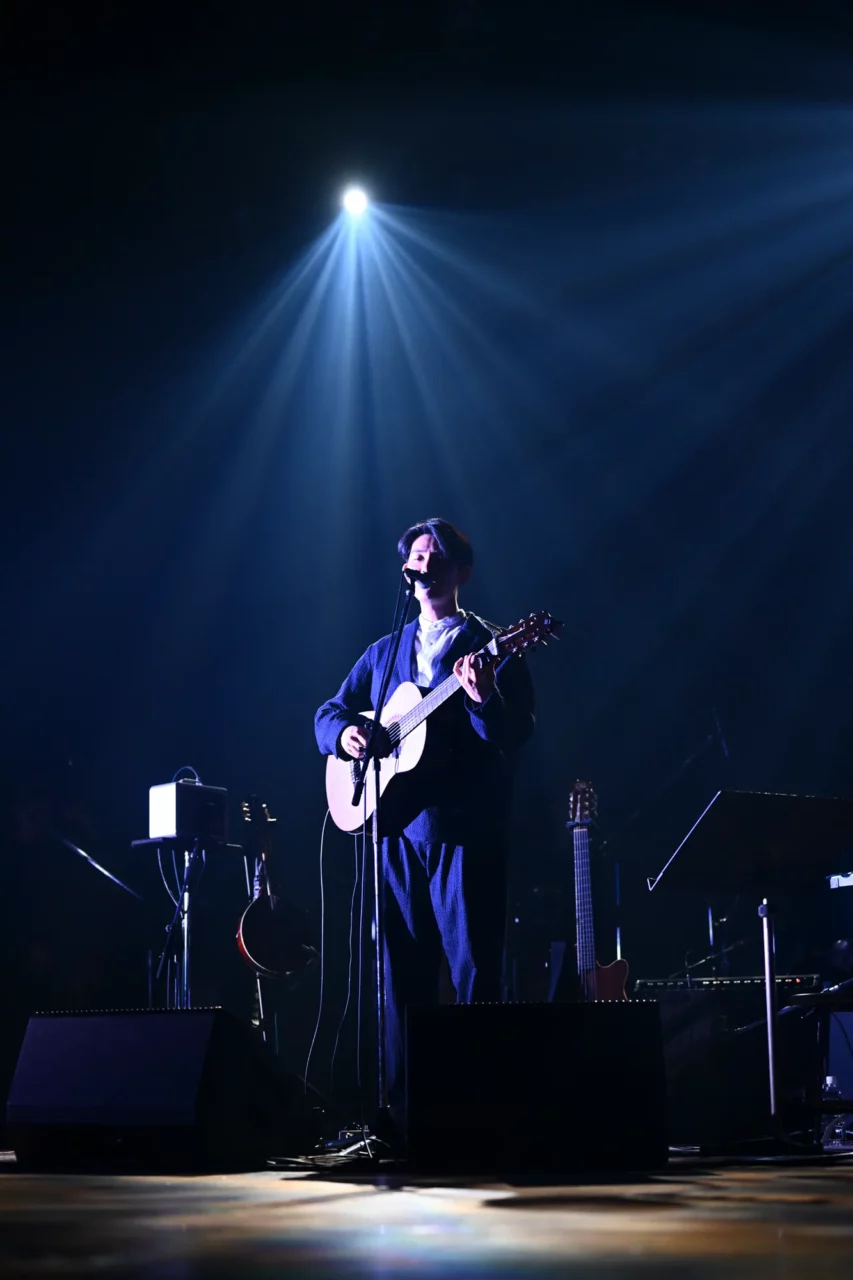
The First Set: A Delicate Dance of Quiet and Intensity
NHK Hall hummed with quiet anticipation. On stage, equipment for eleven musicians lay in readiness, a promise of the expansive sound to come. Stage right, a booth waited for the strings. Suspended above the stage were sculptural frames — like windowpanes floating midair — catching a narrow beam of white light. It looked almost like moonlight slipping through a window, hinting at the intimate world this concert was about to open.
At precisely 6:30 pm. on April 4, 2025, “The Waltz of the Left Behind” began its Tokyo performance.

The evening opened not with grandeur, but with quiet grace. “Yobina,” drawn from Orisaka’s 2018 mini-album “Zawameki,” unfolded with only his guitar and a quartet of strings. The first line — “Kimi yukite / kaze haramu” — floated into the hall, carrying the faint scent of spring.
It was followed by “Hachisu,” one of the key tracks from ‘Jumon’. This time, with yatchi at the electric piano — absent during the previous tour — the piece felt fuller, more grounded. It became clear just how essential that texture was, anchoring the song in a kind of quiet gravity.

At this moment, Orisaka slowly began to recite a poem — “The Spring Problem” by poet Seio Tsuji. “Spring has come again / I can’t remember how many springs this makes,” Tsuji’s lines intertwined with Orisaka’s music, weaving together a fresh realm of meaning that blossomed in the space between the two.

As “Hito Hito” drew to its close, the ambient hum of Hirotaka Yamauchi’s guitar filled the air, seamlessly flowing into “Akebono”, a song from Orisaka’s early days. After his latest track “Oki no Hou e”, the set continued with “Hari no Ana”, “Shachi”, “Hoshikuzu”, and “Spell”. It was in these moments that the softness of the band’s sound truly stood out. The music wasn’t quiet, but it never sought to overwhelm with sheer volume. Senoo Ricky’s drums, normally more forceful, took on a gentler touch. This allowed the subtle nuances of Azumi Miyata’s contrabass, the fluid grace of Ryotaro Miyasaka’s percussion, and the tender saxophone caress from Natsuko Hara to shine through. The vibrant string arrangements by Atsuko Hatano’s quartet added rich layers to the performance, while Orisaka’s mandolin on “Oki no Hou e” gently wove its shimmering tones into the fabric of the ensemble.
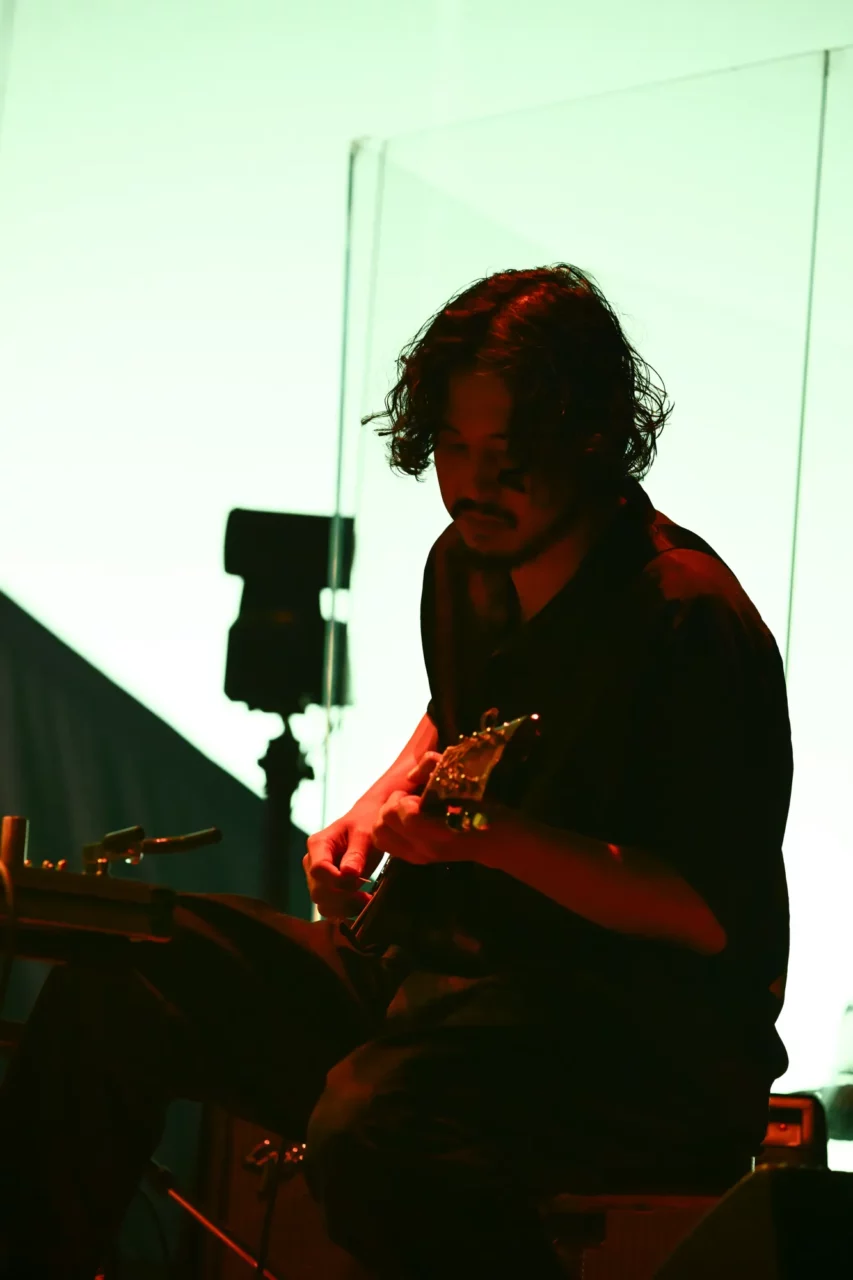

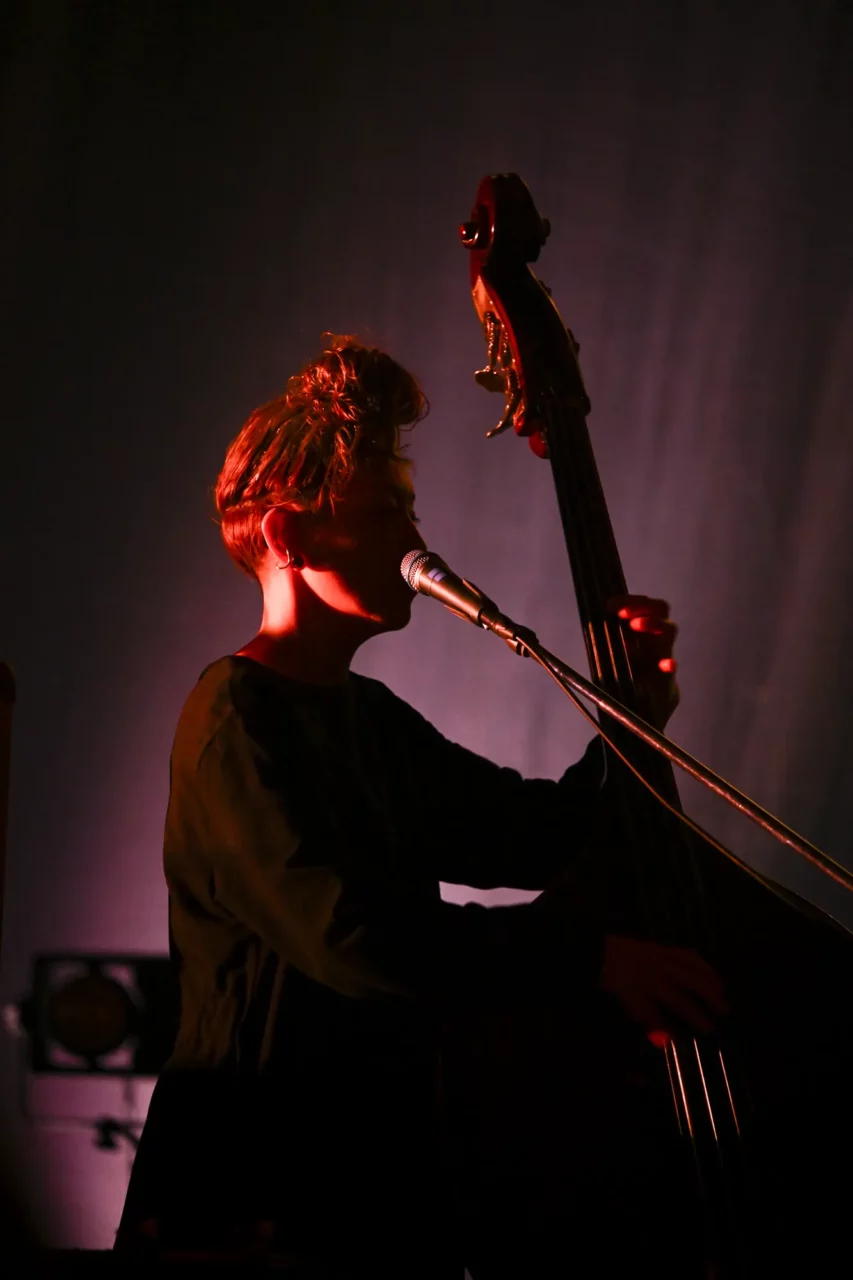

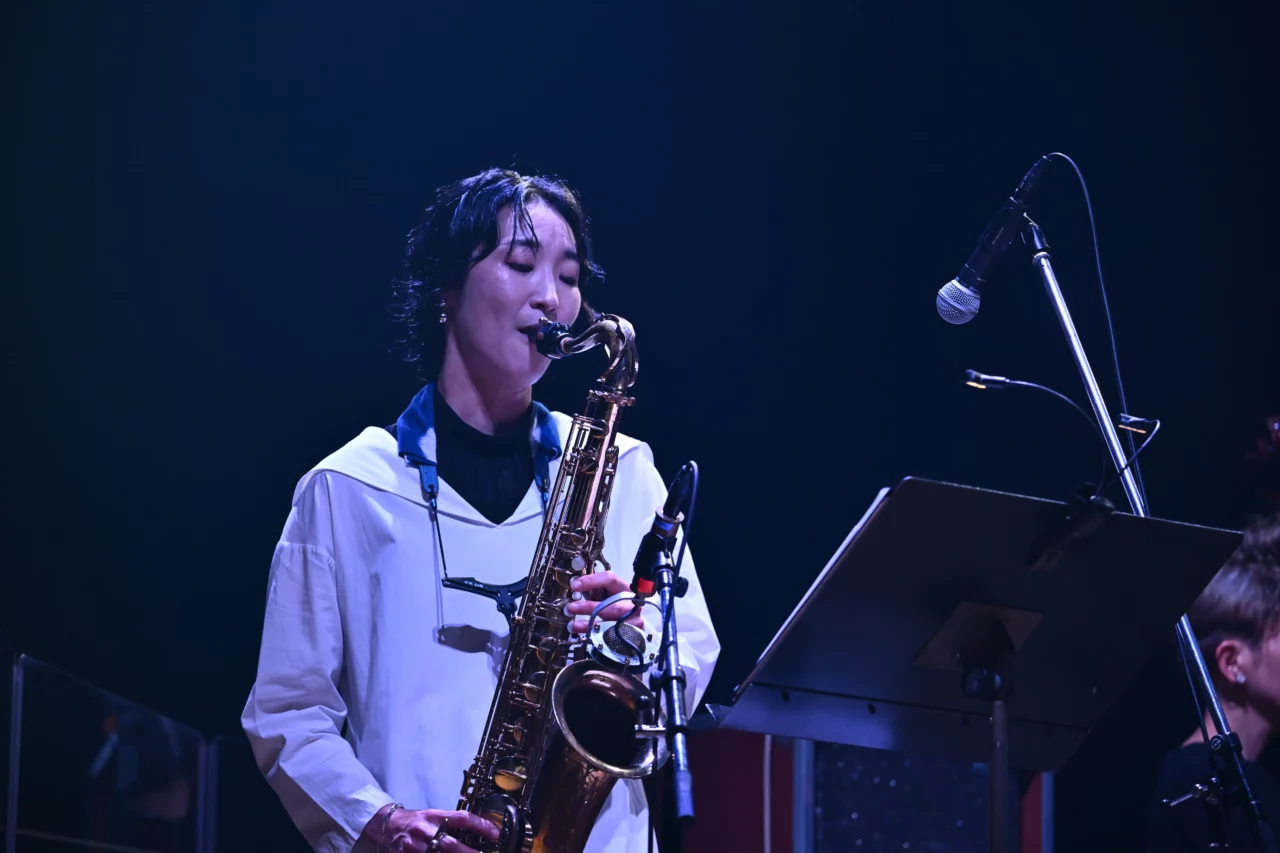

In a sharp contrast, the band’s groove erupted with “Shachi”, intensifying with a force that felt more electrifying than ever. As the song reached its peak, Orisaka let out a primal shout, “Shibuya—!”—and the crowd roared in response. Having witnessed numerous Orisaka performances, I couldn’t shake the feeling that this was the first time I had seen such a striking interplay between quiet tension and explosive movement.
With the first half concluded, a brief intermission took place. On my way to the restroom, snippets of conversation floated through the air: “There’s something different about tonight’s show.” “It feels unlike any other.” It was clear that the audience was buzzing with anticipation, eager to see what Orisaka and his band would bring to the second act.

INDEX
What Lies Beyond That Window?
The second half kicked off, with Orisaka swapping his jacket from the first act for a relaxed, white shirt. The opening track was “Sekai no Tsudzuki”. For a brief moment, it sounded like a new song, but then I remembered—it was a self-cover of a piece Orisaka had contributed to the 2022 animated film ONE PIECE FILM RED, originally sung by Ado. Accompanied only by strings, Orisaka poured his soul into the song, offering a tender version that contrasted with Ado’s dynamic delivery.
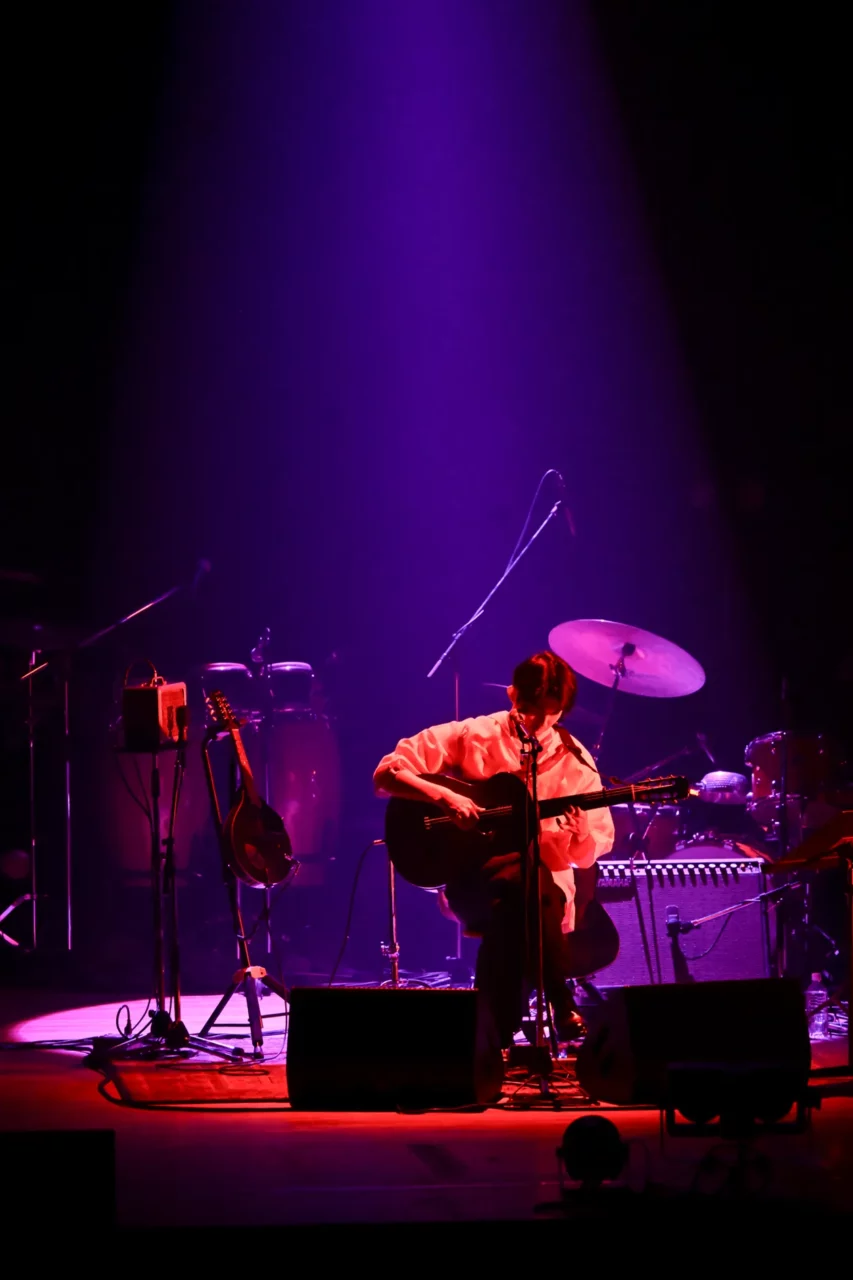
Next, Orisaka performed “Shoki”, a track from Jumon. The lyrics painted an intimate scene, such as “the plastic handle of the ladle melting in the pot”, while embedding a powerful yet understated message: “I am serious / I won’t go to war”. The words “I won’t go to war”, spoken under a red light that felt almost battlefield-like, struck with a quiet intensity. At that moment, the meaning of the window frames hanging above the stage became clearer—what lies beyond them? Music and words, perhaps, are windows into the society we inhabit.

Following this, Orisaka took a moment for an extended talk. He shared the meaning behind the title of the performance, “The Waltz of the Left Behind”, a phrase that originally appeared as the title of an instrumental track on his 2021 EP Asagao. Orisaka explained that this phrase also represents his music itself—a farewell to those who have “gone” and a call to those “left behind”.
As if to bring the theme to life, Orisaka then played “Mado”, one of his earliest works, accompanied only by his gut-string guitar. What does the window represent? This question lingered in the air once again. “Mado” smoothly transitioned into “Hikari”, and from there, into “Asagao”, one of his most iconic songs. During “Hikari”, beams of light stretched across the stage, meeting at Orisaka’s center, creating a breathtaking visual. The refined sound and precise staging made for an unforgettable climax.
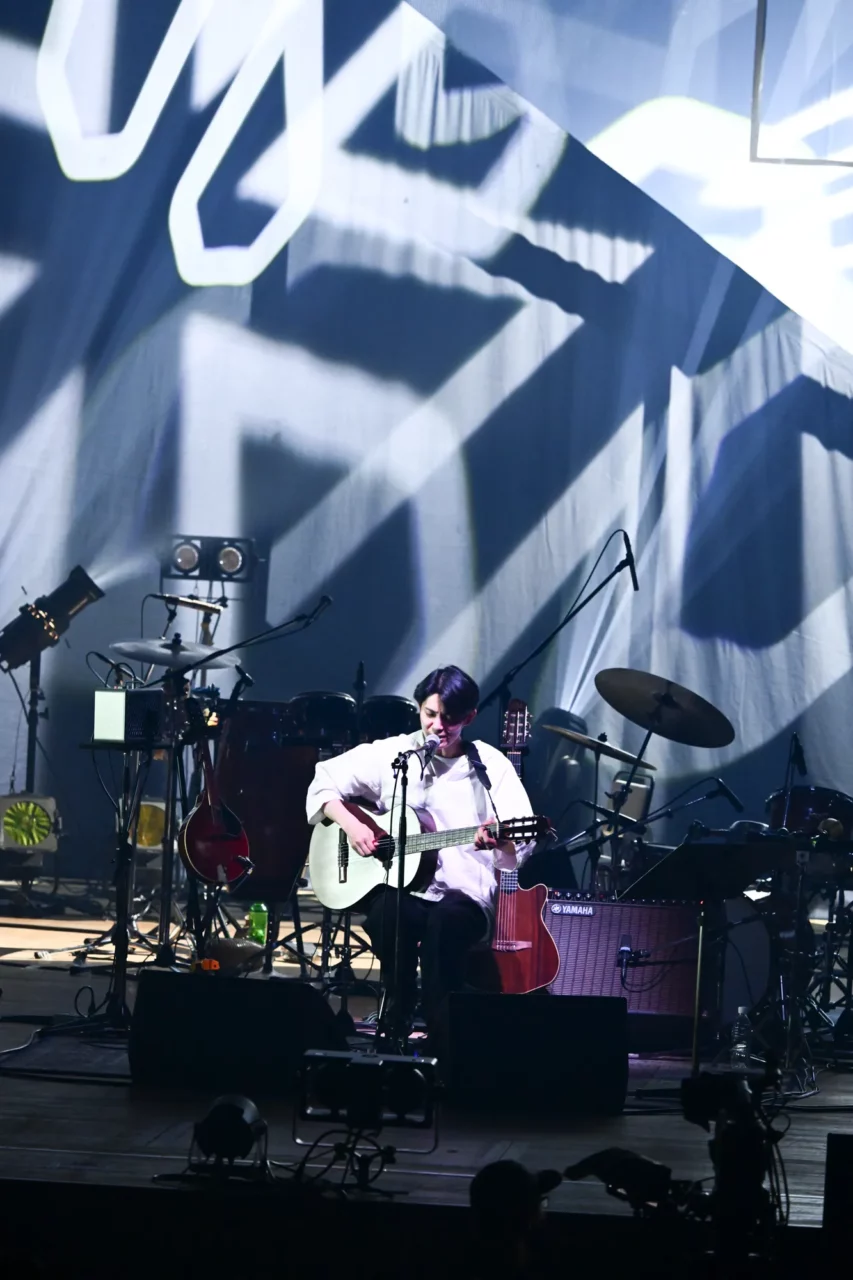
Once again, the atmosphere shifted to a moment of quiet reflection as Orisaka softly read his own poem, “Ashibumi no Ki”. The words flowed seamlessly into the instrumental “The Waltz of the Left Behind”, the very title of the performance. The gentle waltz rhythm eased the audience’s tension, drawing them ever closer to the serene yet inevitable conclusion of the night.
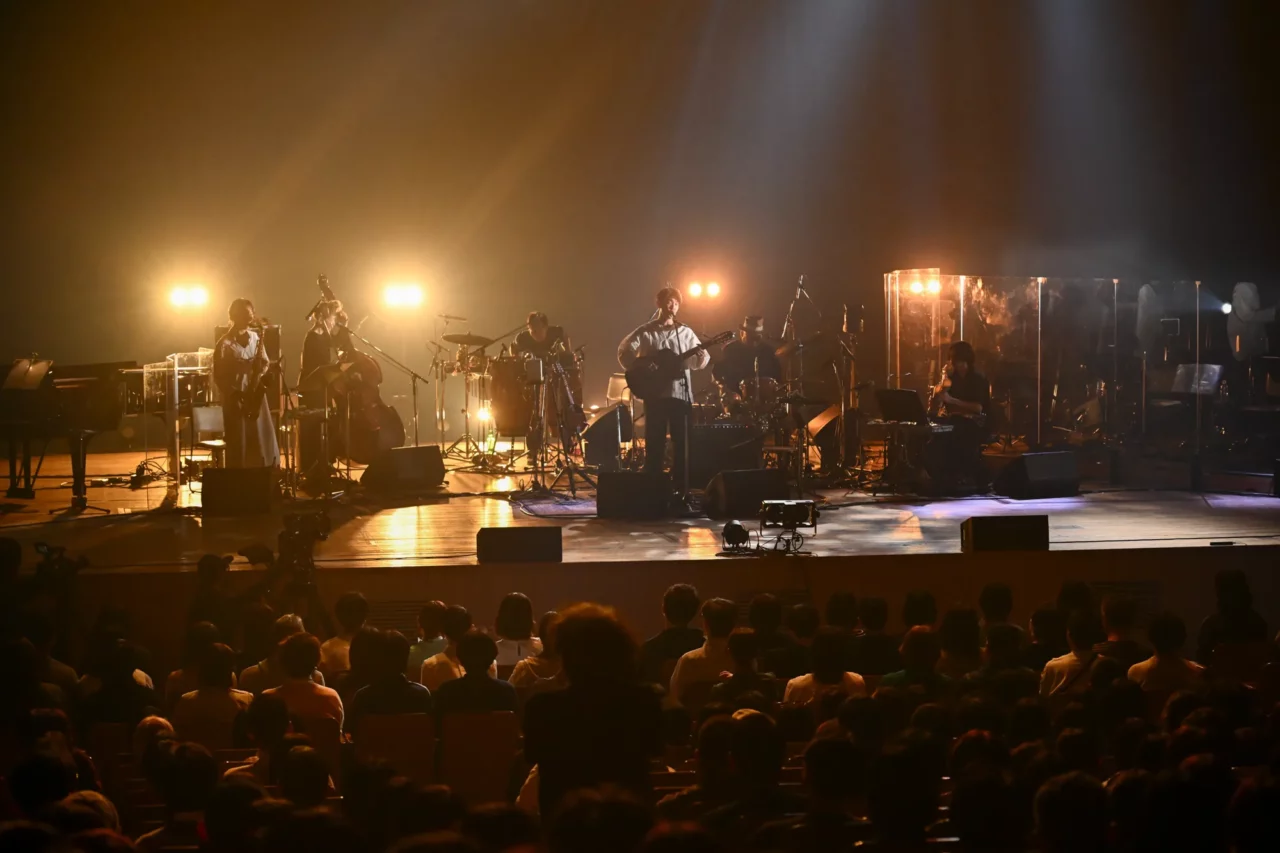
As the mood lingered, yatchi’s grand piano and the strings gently wove a slow, flowing melody. It was “Tsubaki”. Orisaka’s voice blended with the music, evoking the words: “Look, the night is breaking / Why does the night break / There’s a song I want to sing for you, I’ll fly to the next spring”.
“Spring” not only marks the season we’re in, but also carries the weight of a longing—an earnest wish for the snow to melt and for a new season to begin. When will spring finally grace this world, so scarred and weary? In a quiet moment between songs, Orisaka murmured, “Whether you’re here or not, let’s make this a beautiful spring.”
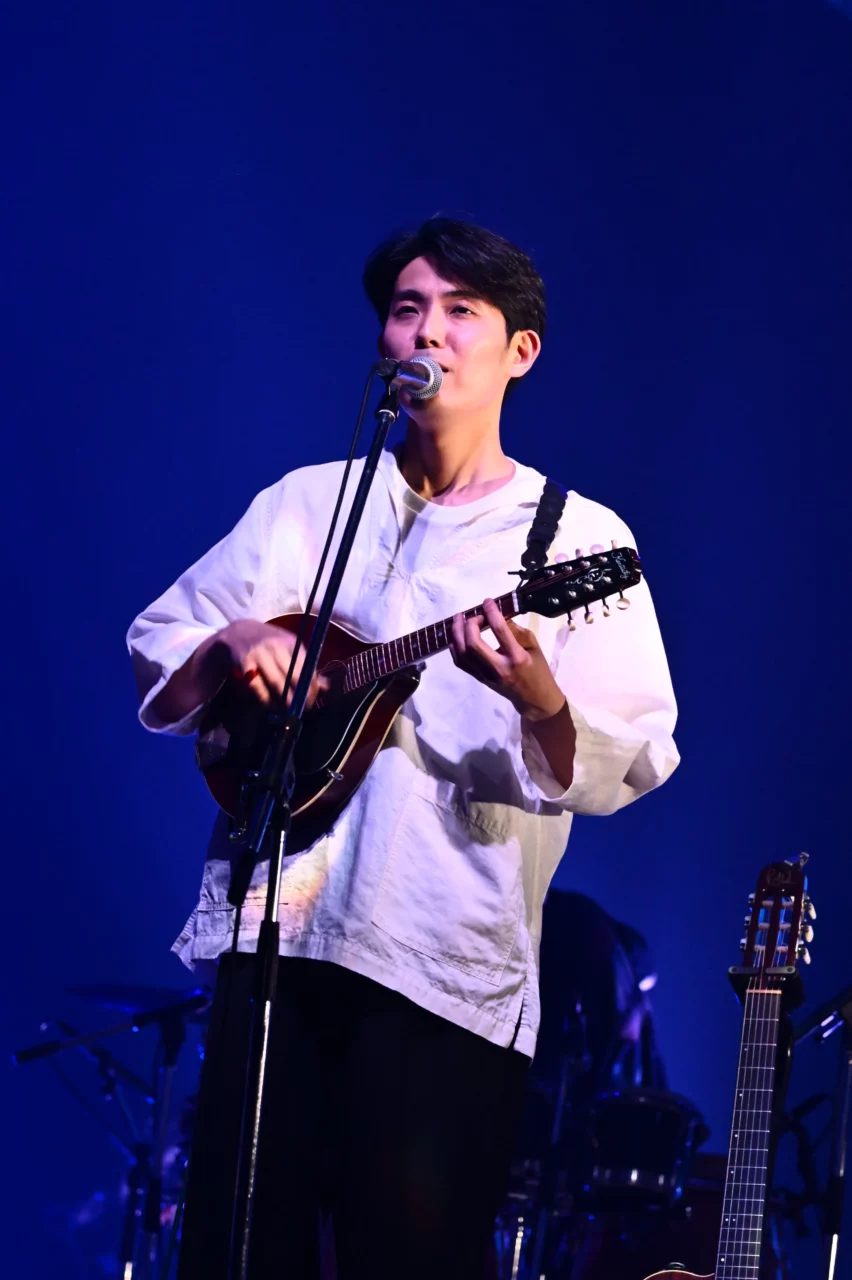
The closing song of the main set was “Sabishisa”, a classic in Orisaka’s live repertoire. While it has been performed countless times, this was the first time it was delivered in its full glory with strings. In my opinion, it was the most moving rendition of “Sabishisa (sadness)” I’ve ever experienced.
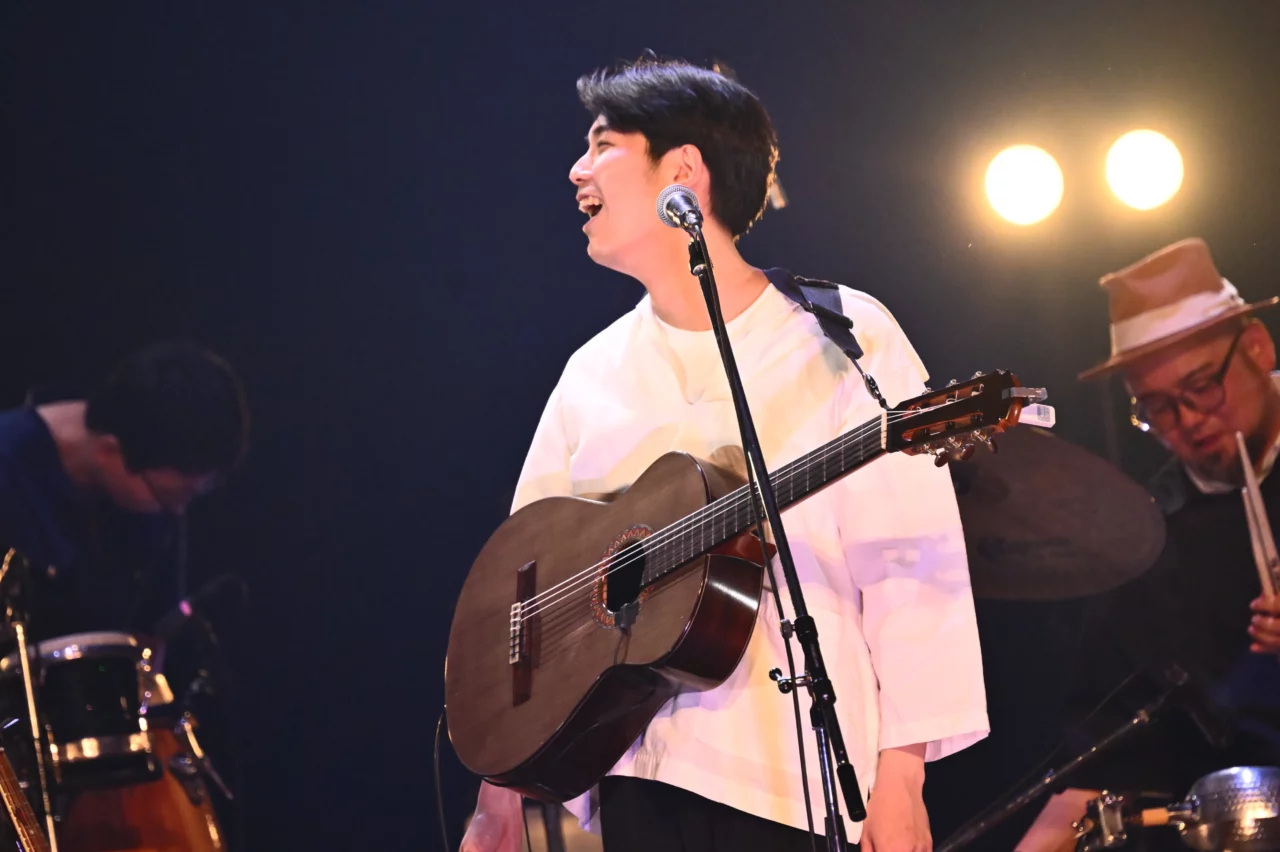
As the main set wrapped up, the 11 performers reappeared on stage to a thunderous applause. “Is it already over? …Yes, it’s over. I’m sad,” Orisaka murmured, his voice tinged with a touch of wistfulness. The first encore was “Yamanba Mambo”, currently featured on NHK’s Minna no Uta. With the lively mambo rhythm, Orisaka let out a playful “Ahh, ooh!” in a cheeky Perez Prado-style shout, though with a hint of bashfulness. Meanwhile, Kota Yamauchi, calmly shaking maracas, added a quiet, endearing charm to the moment.
The final encore brought “Sakamichi”, of course. From its middle section, the strings surged like an ascent up a steep hill. It was, without a doubt, the most electrifying rendition of “Sakamichi” to date. As the final notes faded, the audience leaped to their feet, delivering an exuberant standing ovation that echoed on endlessly.
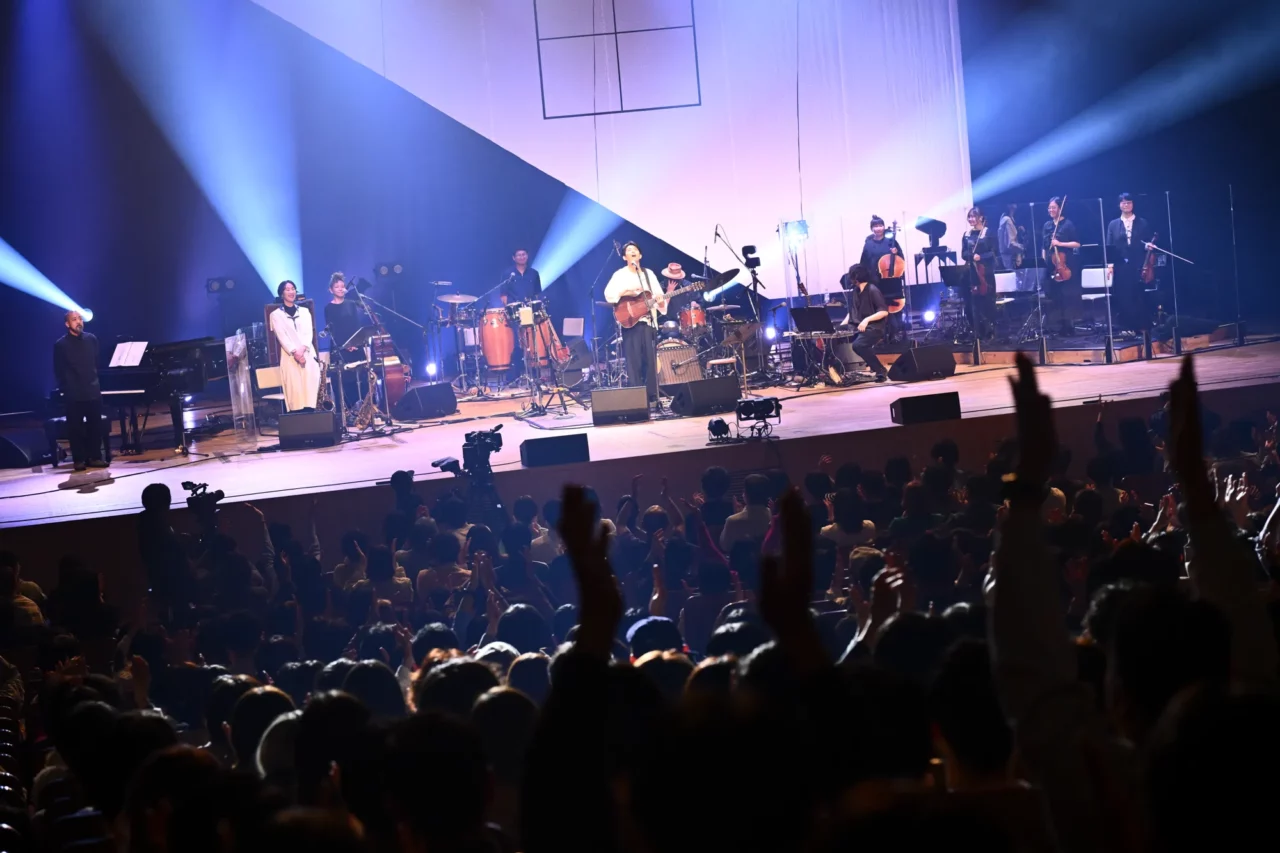
For large-scale performances like this, Orisaka always crafts a distinct theme and curates a one-of-a-kind setlist. Even with familiar tracks, the way they’re placed in the set transforms their meaning, with each performance revealing new layers through its unique flow. This is what makes Orisaka’s live shows so unpredictable, filled with exhilarating moments and surprising twists.
This particular performance, which balanced early hits with newer material, marked the realization of a long-awaited vision—a grand finale-like show featuring strings and a larger ensemble, something Orisaka had yet to explore. It was a defining moment in his career, one that showcased his evolution. Naturally, this achievement is built on years of collaboration with his band, and the growth they’ve nurtured together.
In that way, this concert felt like an essential chapter in the journey ahead, subtly foreshadowing the arrival of “a new season.” Stepping outside NHK Hall, I was met with the crisp breeze of spring, perfectly mirroring the lingering sense of calm and anticipation that still filled the air.
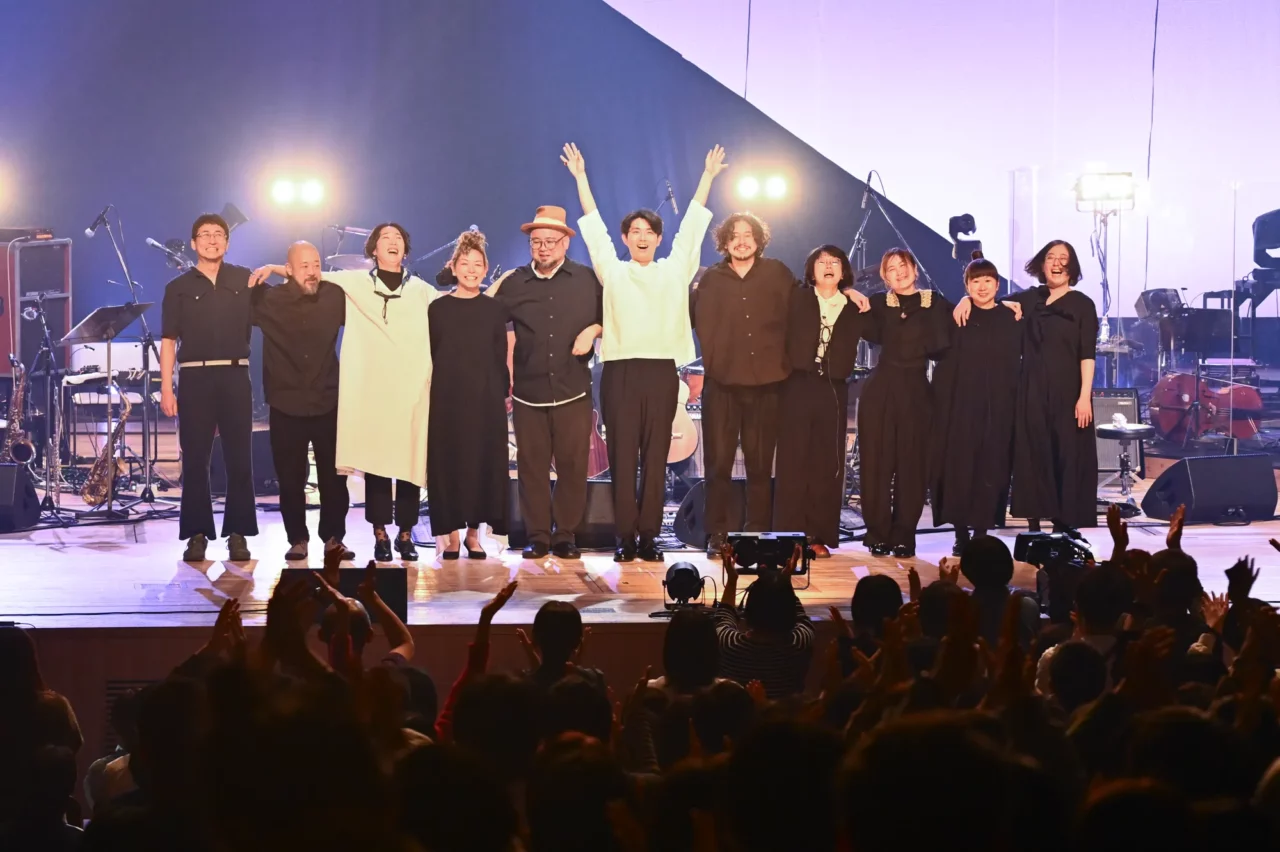

Setlist
Yuta Orisaka “The Waltz of the Left Behind” Tokyo Performance at NHK Hall, April 4, 2025
Part I
01. Yobina
02. Hachisu
03. Hitohito
04. Akebono
05. Oki no Hou e
06. Hari no Ana
07. Shachi
08. Hoshikuzu
09. Spell
Part II
10. Sekai no Tsudzuki
11. Shouki
12. Mado
13. Hikari
14. Asagao
15. Nokosareta Mono no Waltz
16. Tsugumi
17. Sabishisa
<Encore>
18. Yamamba Mambo
19. Sakamichi
Yuta Orisaka “The Waltz of the Left Behind”

April 4, 2025 (Fri) Tokyo Concert
open 17:30 | start 18:30
Venue: NHK Hall
Ticket Types: All reserved seats / Advance: ¥8,200 / Under22: ¥6,500
For inquiries, please contact
SMASH 03-3444-6751
HOT STUFF PROMOTION 050-5211-6077
April 11, 2025 (Fri) Osaka Concert
open 17:30 | start 18:30
Venue: The Symphony Hall
Ticket Types: All reserved seats / Advance: ¥8,200 / Under22: ¥6,500
For inquiries, please contact
SMASH WEST 06-6535-5569
Planning/Production: AMUSE / SMASH
The Waltz of the Left Behind
Fleeing footsteps. A face of surrender.
A band plays aboard a sinking ship, hands trembling, playing the only sounds they can summon.
I watch them fade away, and I remain—alive.
Will there ever be a day when I fully grasp the depth of simply being alive, right down to the marrow of my bones?
For now, I’ll greet the ones lost to the waves and those reflected in the water with the same quiet nod I’ve always given.
But still, if I must—why not, at least, with a brighter face?
Yuta Orisaka




















